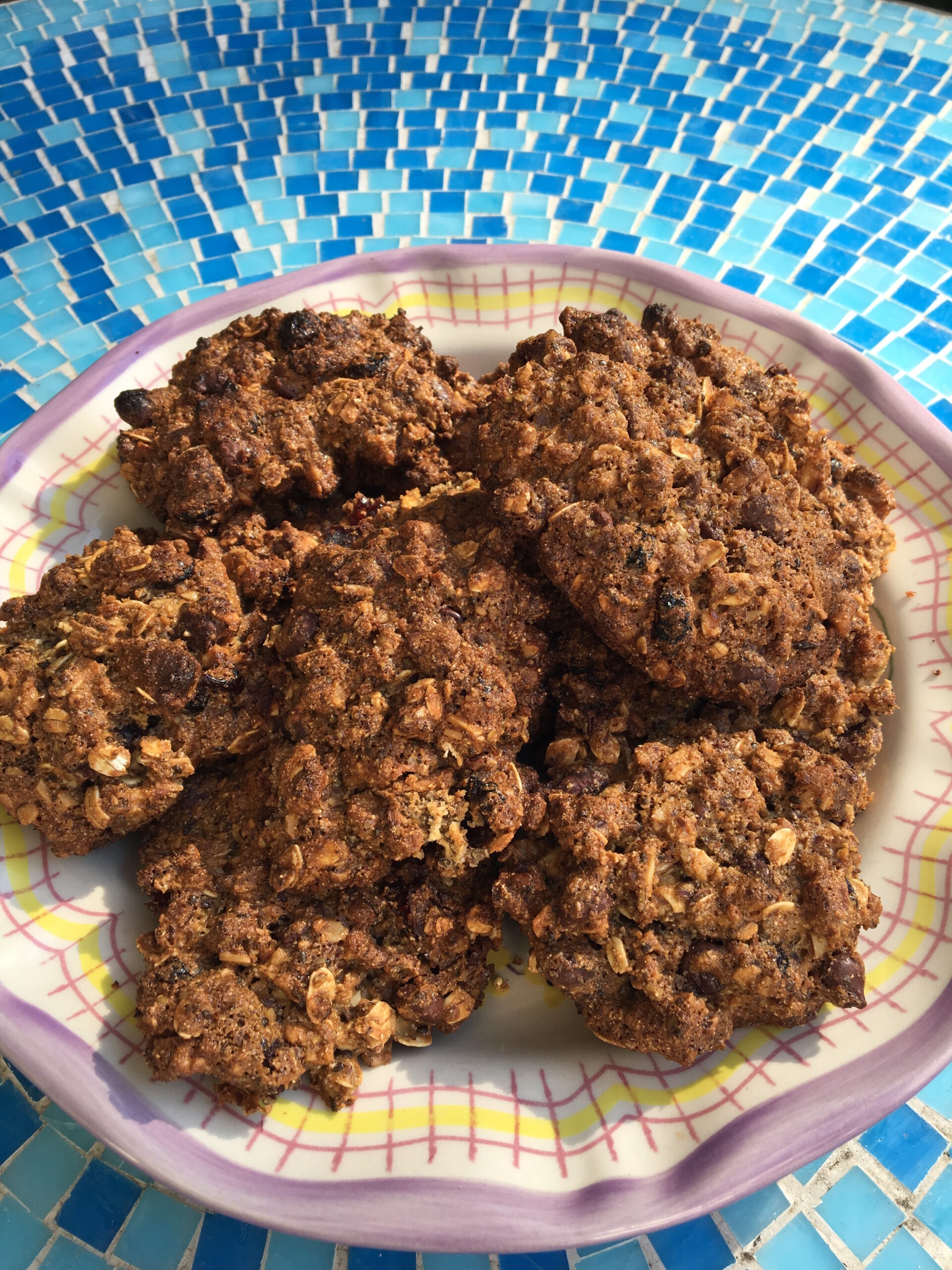Antioxidant Cookies: chocolate chip oatmeal cookies with flax seeds, walnuts and cranberries
Cook: 20 min
Yield: about 24 cookies
Ingredients:
- 1 cup whole wheat flour
- 1/2 teaspoon baking powder
- 1/2 teaspoon baking soda
- 2 cups rolled (old-fashioned) oats
- ½-1 cup coarsely chopped walnuts
- ½-1 cup raw sliced almonds
- ¼ cup extra virgin olive oil
- 1 1/4 cup maple syrup
- 2 large eggs
- 1/2 teaspoon vanilla extract
- 1-1 1/2 cup semisweet dark chocolate chips
- 1 cup of superseeds (chia, flax and coconut – great source of omega-3 fatty acids)
- ½-1 cup cranberries
Directions:
- Preheat oven to 350 degrees F.
- In a medium bowl, stir the flour, baking powder, baking soda, oats, flax, chia and coconut seeds, walnuts and almonds together with a whisk or fork.
- In a large bowl, beat the 2 eggs until smooth, pour the extra virgin olive oil and maple syrup over it. Add vanilla and mix (manually or with mixer) until you achieve even consistency. Gradually add the flour-oatmeal mixture (turn the mixer on to lowest setting while doing this, if you are using one. Blend just to combine, then mix in the chocolate chips and cranberries.
- Drop generous tablespoon-sized balls of dough onto a baking pan lined with a thin layer of extra virgin olive oil). You may flatten and round out the cookies if desired. Bake for approximately 20 minutes (you may turn the pan once for even baking in the middle of this interval). The cookies are done when they are lightly browned on top. Allow the cookies to cool.

